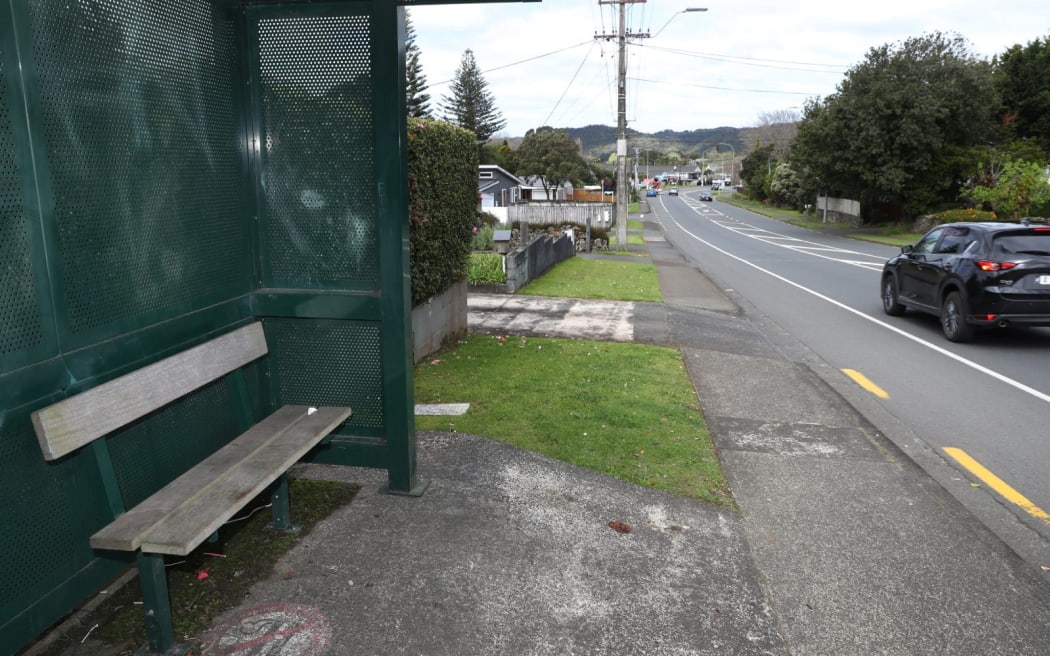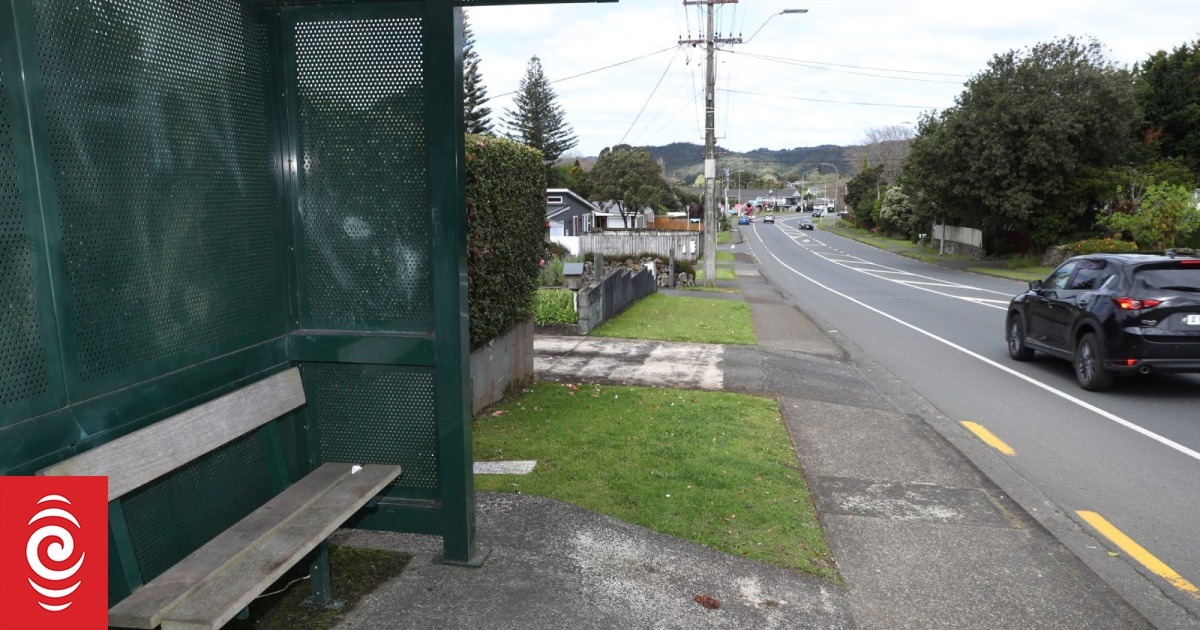
Buses heading south into Whangārei will have priority along Kamo Road past this bus stop, as part of the road’s new morning city-bound peak rush hour clearway
Photo: Northern Advocate / Michael Cunningham
Northland’s first bus priority lane will see cars banned from travelling Kamo Road’s city-bound clearway for two hours during Whangārei’s morning rush hour.
The six-kilometre, $2 million bus lane will go from Te Kamō to Whangārei city centre. Cars will be banned from the clearway, south along Kamo Road, to provide morning peak priority for buses into the city.
Whangārei District Council (WDC) on Thursdayconfirmed the bus lane clearway as part of its $14 million package from Waka Kotahi NZTA’s Transport Choices programme. Funding has been committed for 18 projects to be carried out in the next year.
WDC general manager infrastructure Jim Sephton said everything was in place to move quickly on the bus priority lane, as part of the sustainable transport growth programme. The projects aim to encourage different transport modes for the city.

Priority bus lane consultation would come next.
The new bus priority lane will see more frequent bus trips, with buses leaving for the city centre every 15 minutes rather than every half hour.
Councillor Scott McKenzie said the morning rush hour clearway would make bus trips quicker, increasing their benefit to those considering public transport instead of cars to get to work or school.
McKenzie said bus priority lanes were common in Wellington and Auckland. They provided interesting and innovative public transport options.
Construction on the bus lane must start by March next year, or earlier as a condition of the Transport Choices programme component of the Whangārei mahi’s funding.
The priority lane is part of $4.6 million set aside from the programme for Whangārei city bus improvements. These include upgrading the city’s troubled Rose Street bus terminal by replacing its toilets, shelters and ticketing buildings. The detailed design phase is the next stage of this project.
Meanwhile, major new development work will extend the Kamo shared path north and provide a number of links to locations along its route.
The Kamo shared path will be extended from Fisher Terrace, where it currently ends, to Station Road in Te Kamō .
A 50m repurposed rail bridge will be installed as part of the shared path development.
New connections from the shared path’s central spine are also to be built linking it to locations including Whau Valley School, Whau Valley shops and Fairway Drive.
New bike facilities will also pop up in the city centre, where Whangārei will get its first secured bike parking under the new work, with $400,000 earmarked at key locations.
There will also be upgrades for the Raumanga shared path with $1.55 million spent from Tarewa Park to Raumanga Reserve and $1.4 million from Second Ave to Lovers Lane Bridge in Cafler Park sections. There will also be a $300,000 upgrade of the Aves walkway around First Ave to Third Ave.
New traffic calming is also on the radar as part of the 18 projects. The work will be funded through a combination of the transport choices programme, other Waka Kotahi NZTA funding and council rates. There will be $800,000 spent on Te Kamō west’s Clark Road and $550,000 for Te Kamō east’s Grant, Wakelin and Boswell Streets.
Raumanga is also in for traffic calming with $950,000 for Tauroa and Fairburn Streets plus Hedley Place.
Local Democracy Reporting is Public Interest Journalism funded through NZ On Air.



